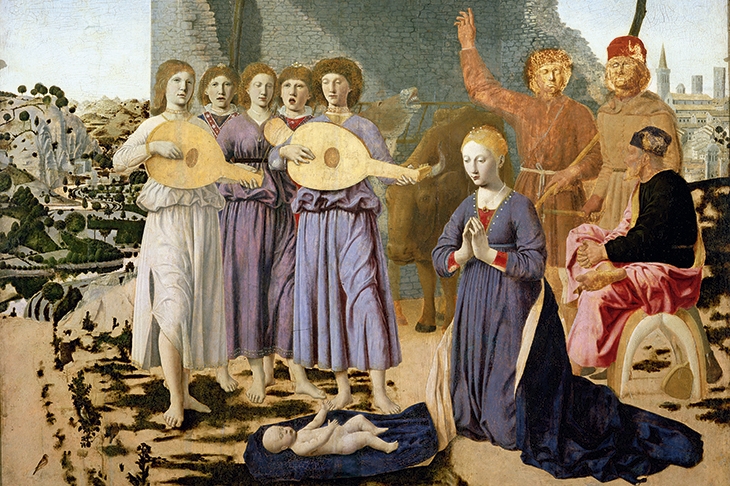In the early 1370s an elderly Scandinavian woman living in Rome had a vision of the Nativity. Her name was Birgitta Birgersdotter, and she was later venerated as St Bridget of Sweden. In her account of the experience, transcribed by her confessor, she described herself as an eye witness. Her narrative began: ‘When I was present by the manger of the Lord in Bethlehem…’
Around a century later, Piero della Francesca (c.1412–92) used Bridget’s vision — or parts of it — as a starting point for a painting. This picture, now in the National Gallery, is one of the best-loved depictions of this immensely popular subject in the history of art.
In some respects, Piero followed Bridget’s visionary account closely. She related how the moment of childbirth itself was ‘so sudden and instantaneous’ — and miraculously free of pain and mess — that she could not discern how it had taken place. At one moment, the Virgin was standing, ecstatic and lost in contemplation. The next the child was lying on the ground, ‘naked and shining’. Then Bridget heard ‘angels of miraculous sweetness and beauty’ singing.
The Virgin instantly clasped her hands and worshipped the baby, who, feeling the coldness and hardness of the ground, raised his little arms imploring her to lift and hold him. Piero, like many 15th-century artists, depicted this moment: the Adoration of the Virgin in which the Madonna kneels before the baby. He borrowed other features from Bridget’s narrative — the Virgin’s ‘beautiful golden hair’, for example, and the angelic choir. But he translated the latter from visionary sound to sight.
Piero’s heavenly band, singing and strumming on their lutes, are as prominent as the Virgin and her child. The colours of their robes — white, mulberry and light blue — form a chord, each note distinct yet harmonious.








Comments
Join the debate for just £1 a month
Be part of the conversation with other Spectator readers by getting your first three months for £3.
UNLOCK ACCESS Just £1 a monthAlready a subscriber? Log in